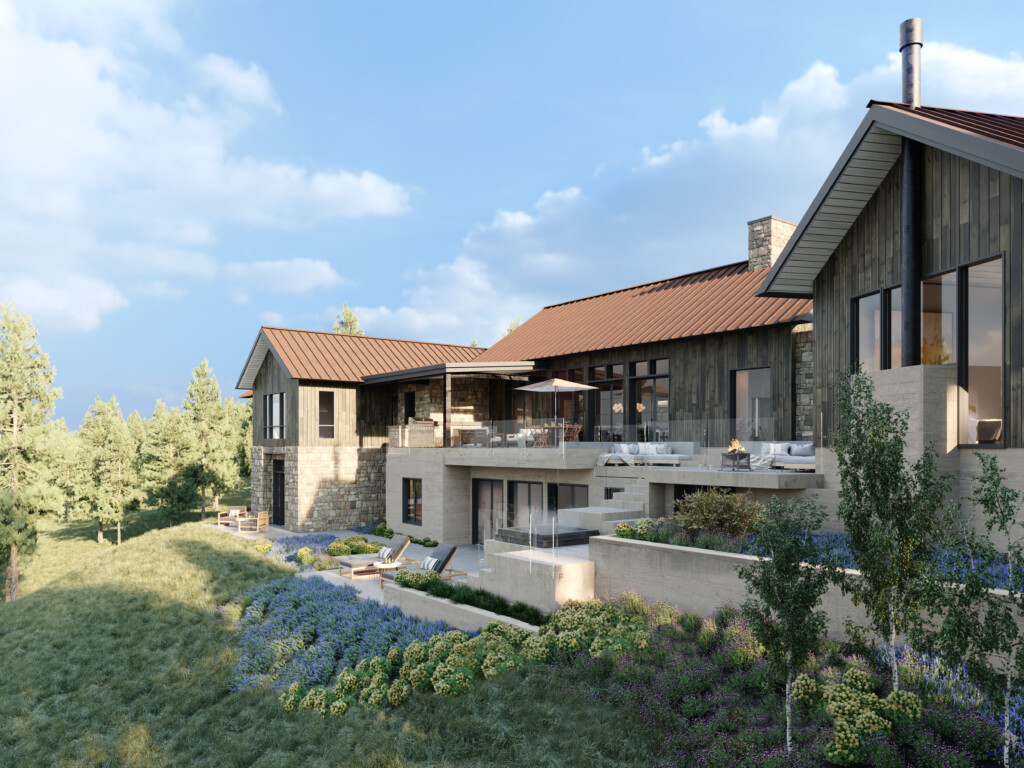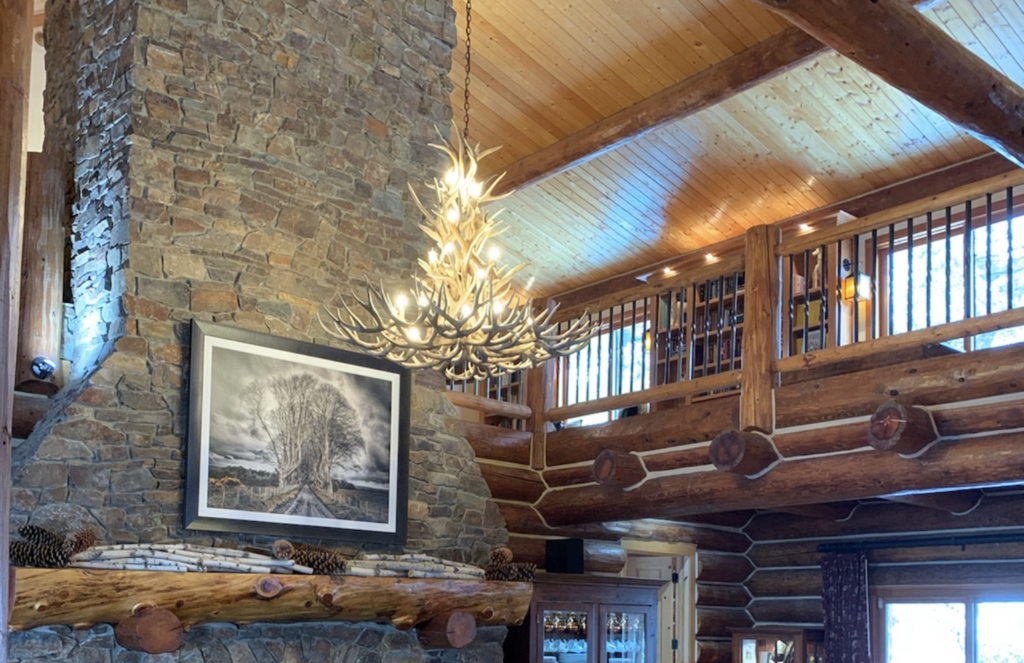The First Vertical Hydroponic Greenhouse in North America
Designed by Nona Yehia, principal of Jackson, Wyoming-based GYDE Architects

Controlled environment agriculture and specifically vertical farming (like this Vertical Harvest building designed by architect Nona Yehia) will be one very important aspect to solving the global food crisis. | Photo by Alexander Herring
Vertical Harvest’s flagship farm in Jackson, Wyoming, was the first vertical hydroponic greenhouse in North America. It has a 1/10-acre footprint and, every year, produces a bountiful 100,000 pounds of produce (everything from microgreens and herbs to tomatoes, edible flowers and berries).

By growing up—not out— vertical farms can grow large quantities of affordable, nutritious food on small, urban footprints. | Photo courtesy Vertical Harvest
The multi-story steel-and-glass building, designed by Nona Yehia, principal of Jackson, Wyoming-based GYDE Architects, bathes the growing plants in natural light. “The structure was not only meant to be a centerpiece of our community, but the systems are intentionally designed to be people-forward and accessible,” she says.
Yehia is passionate about agricultural integrity, economic sustainability and accessibility as well as about providing meaningful jobs for people with disabilities. “Growing up a foodie and with a brother with developmental disabilities, I have always been aware and attuned to both issues,” she says.

Specially designed carousels keep plants rotating, giving them equal time in natural light. | Photo by Out West Photography, Shivyon Mitchell
Conceptualized in 2010 by Yehia and co-founder Caroline Croft Estay, Vertical Harvest is an innovative business at the intersection of climate action, food security, economic sustainability and equitable employment.
After five years of raising money and forming partnerships with the city of Jackson and the state of Wyoming, Vertical Harvest opened its doors in 2016. Yehia’s vision now extends beyond Jackson and toward “standing up” 10 more hyper-local vertical farms in underserved areas across the country over the next five years.

Co-founder Caroline Croft Estay develops customized employment plans for the company’s workers. More than half are people with physical or developmental disabilities. | Photo by Hannah Hardaway
“Over the past six years we’ve gained expert knowledge in plant science, growing systems, product development, and tested our employment model, all of which we plan to use for future farms across the country,” she says.
“We choose to build farms within cities … so low-income and low-access areas, often referred to as ‘food deserts,’ aren’t relying on produce trucked in from far away,” says Estay. Vertical Harvest produce is available in markets and is served in restaurants in Teton County, Wyoming. Any excess is donated to local food banks.

Nona Yehia, architect and co-founder of Vertical Harvest, designed the multi-story greenhouse that grows produce year-round. | Photo by Lindsay Linton
Yehia notes that the world’s population will grow to more than 9.9 billion people by 2050 and there will not be enough arable land to meet the caloric needs of the population. Decreased access to fresh water and an increase in intense climate disruptions will make outdoor farming more unpredictable.

Tomatoes, lettuce, microgreens, herbs and petite greens are available in grocery stores and restaurants throughout the Teton Valley. Unsold produce is donated to food banks. | Photo by Joelle Lazz
Vertical farms, at the forefront of what is called controlled environment agriculture (CEA), offer part of the solution to impending world food shortages. The premise is that, compared with traditional farms, vertical farms grow crops year-round—faster, with higher yields, while using far less water and no pesticides.
For consumers, vertical farm produce is tastier, healthier and has 100 percent traceability. “We believe access to fresh food is a human right,” Yehia says. She sees her company as a chain of living local produce stands—with a social mission that provides jobs for underserved populations as well as food education and a community space. “We grow not only better food, but better futures,” she says.
DESIGN DETAILS
FARM Vertical Harvest Farms
ARCHITECT GYDE Architects












